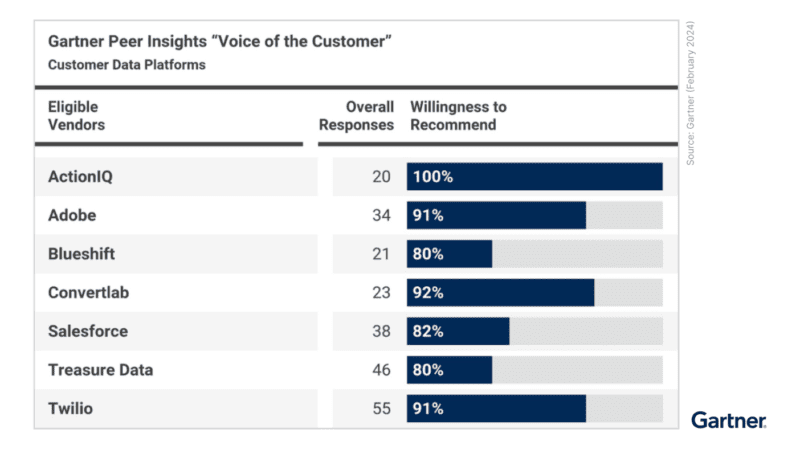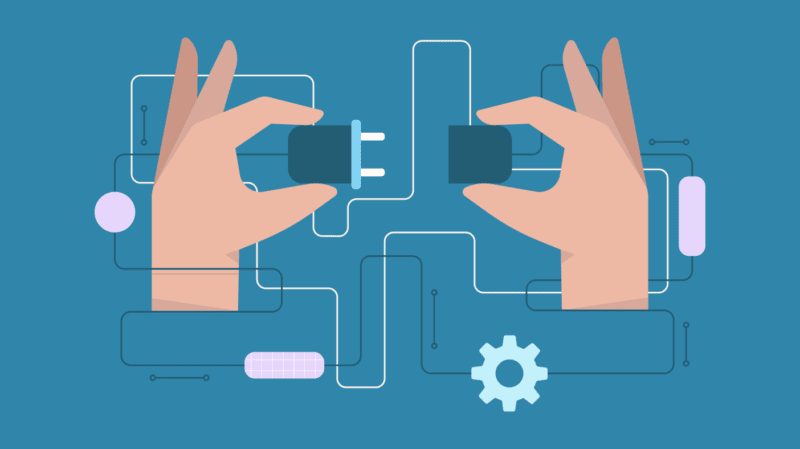What is the Segment CDP?

The customer data platform (CDP) market is confusing — but it doesn’t have to be. This article on the Segment CDP is part 3 in a series of blog posts exploring different types of CDPs, how they differ from other technologies and what you can do to select the right vendor for your enterprise company. Check out part 1 on the Adobe Marketing Cloud CDP and part 2 on the Salesforce Marketing Cloud CDP.
Segment made a big splash in the marketplace after its multi-billion dollar acquisition by Twilio. Between that, it’s ever-present marketing and its freemium model, the data integration CDP boasts a lot of brand awareness.
But does it have the capabilities enterprise brands need?
Data integration CDPs such as Segment, also sometimes referred to as customer data infrastructure, are an evolution of digital tag and software development kit (SDK) solutions. These types of CDPs were designed to pipe data from one tool to another after a certain event has occurred.
While Segment has expanded beyond this use case, it has limitations enterprise brands should be aware of. Keep reading to figure out if it’s the best option for you.
Who is the Segment CDP for?
The Segment CDP was primarily built for IT teams as opposed to average business users. Segment’s original purpose was to help IT professionals manage the collection of digital data from one point solution and distribute it in real time to other systems without having to develop in-house data connectors such as application programming interfaces (API) or SDKs.
Segment has developed new capabilities, but the vast majority of its user base still relies on it for data piping needs. Additionally, it doesn’t support private cloud deployments.
Because of this, Segment has historically appealed most to small and medium-sized businesses seeking a tag management solution that can help them quickly pipe digital data between disparate technologies.
Watch our CDP 101 video below for more information on how CDPs fit into your marketing technology strategy:
How Do You Use the Segment CDP?
Segment acts as a digital data connector between different systems. With prebuilt integrations for many digital data sources and advanced rules-based triggering, Segment is great at helping IT teams route event data in real time from digital applications to other technologies, such as websites, apps and enterprise-level CDPs.
Segment has added the ability to segment audiences and create digital-only customer journeys to help out business teams. But since these features are relatively new, we recommend testing and validating them to ensure they provide the scalability, flexibility and connectivity you require before you commit.
What Are the Pros & Cons of the Segment CDP?
With its solid data integration capabilities, Segment is ideal for IT teams on the hunt for a tool that will help them pipe data between siloed applications. However, its inability to handle non-digital data prevents it from executing on some of enterprise brands’ other business-critical use cases.
Segment is not designed to handle offline data or channels, putting a default limit on offline records and profile attributes. This means non-digital customer data and interactions, such as offline purchases recorded in point of sale systems, must be managed by other tools. And with a lack of native probabilistic matching, Segment struggles to solve for identity resolution and deduplication.
Because of its streaming-based infrastructure, Segment is unable to provide predictive analytics, such as for identifying customer churn risk, assigning customer lifetime value scores or creating lookalike models. Without predictive intelligence, customer journey optimization is also ruled out.
Numerous prebuilt integrations enable brands to distribute data to activation tools in real time, but only in the form of triggers. And unlike CDPs built for enterprise scale, Segment can’t create customer journeys with unlimited steps, prohibiting the complex multi-step customer journeys enterprise brands commonly employ.
Because of the offline data limitations mentioned above, business users will continue to rely on technical resources for executing on different use cases. This speaks to Segment’s heritage as a data integration CDP, which analysts have said require users who are comfortable with technical tools, as opposed to CDPs that are geared toward business users with less technical backgrounds.
While Segment is a relatively inexpensive solution for connecting existing tools, operational cost creep can become a massive problem depending on the size of your customer base and your use of offline data. If you go beyond Segment’s default limit, you’ll be required to pay a lot more. This is why Segment is primarily used by smaller organizations with less data and no offline data. Its reliance on Google’s BigQuery for data analysis exponentially increases the costs to compute data for larger enterprise companies.
How Does ActionIQ Compare to the Segment CDP?
Unlike Segment, ActionIQ was built with the complex use cases of enterprise businesses in mind.
In addition to data piping via ActionIQ Tag, our proprietary InfiniteCompute data layer means enterprises have no limits on the quantity of data they ingest and store or the number of attributes individual customer profiles can have, enabling a comprehensive customer 360.
And since ActionIQ’s machine learning capabilities can be customized for different business needs, enterprise brands can easily deduplicate their customer bases and leverage predictive analytics for at-risk, lookalike and affinity modeling.
Additionally, our user-friendly interface is specifically designed for non-technical business users, empowering teams outside of IT to take action on online and offline data and deliver personalized customer experiences across channels using preferred point solutions. Because there are no restrictions on the number of journeys you can design and activate within ActionIQ — or how complex you want them to be — you can build truly personalized, omnichannel customer experiences to reach your customers whenever and wherever they interact with your brand.
The ability to reduce reliance on IT and data teams for data unification, segmentation, experience orchestration and more — freeing them up to focus on higher-impact projects — helps brands reduce data analyst workload by 40% and increase marketing efficiency by 25%, all while driving a 522% return on investment.
Stay tuned for part 4 in this blog series, where we’ll explore the Amperity CDP.
Learn More
Download our CDP Market Guide to learn more about different types of CDPs or contact one of our experts to see how ActionIQ differs from Segment and other data integration CDPs.





